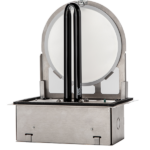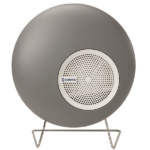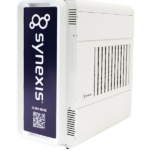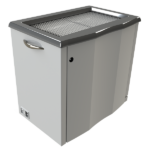Wildfires wreak havoc every year, sending billowing plumes of smoke into the atmosphere. While this is a concern for the outdoor environment, recent research is shedding light on an overlooked aspect of this issue. That issue is the impact of wildfire smoke on Indoor Air Quality (IAQ). This is particularly relevant in long-term care facilities that house vulnerable populations.
Luke Montrose, an environmental toxicologist and researcher at Colorado State University, has been heavily researching the impact of wildfire smoke on indoor air quality. His data from 2020 showed some alarming statistics. Much of the particulate matter from outdoor wildfire smoke found its way into long-term care facilities in Idaho. Those results led to Montrose expanding his study into Montana and also Colorado in an effort to recognize the broader implications for seniors in care facilities around the country.
Wildfire Smoke in the US
If you’re wondering just how common wildfire smoke is in the United States, think back to last June. That’s when smoke from eastern Canadian wildfires began to reach as far as the Midwest, impacting more than 120 million people. As wildfires have increased in recent years, the issue of IAQ is a growing concern.
The health risks associated with wildfire smoke are well documented at this point, particularly those concerning fine particles known as PM2.5. These small particles can penetrate deep into the lungs and they can even work their way into the bloodstream. This poses severe risks for those with preexisting respiratory or cardiac conditions. Dr. Savannah D’Evelyn, a postdoctoral scholar at the University of Washington, emphasizes the need to address the large gap in understanding the massive impact on health for seniors from smoke exposure.
A Lack of Regulation on Indoor Air Quality in Long-Term Care Facilities
“There really aren’t any regulatory standards for indoor air quality, broadly, in any country that I’m aware of,” said Katherine Pruitt, national senior director for policy at the American Lung Association.
With a lack of regulation, nursing homes and assisted living facilities are left without clear guidelines to maintain healthy indoor environments. In Montrose’s research, he is on a mission to fill the void with air quality monitors, which would be incredibly helpful. Other innovative solutions are such an important part of addressing indoor air quality concerns, specifically in long-term care facilities. Synexis Dry Hydrogen Peroxide (DHP®) is utilized to fight airborne pathogens and surface contaminants continuously. For a population that needs extra protection, Synexis provides that.
As the research into wildfire smoke and indoor air quality expands, solutions like Synexis will become even more integral. They help to create safer and healthier environments for those in care facilities around the nation. Partnerships between researchers like Montrose and technologies like Synexis will continue to address the complex challenges posed by wildfire smoke infiltration.
To speak with an IAQ expert from Synexis, fill out this form and we’ll be in touch as soon as possible.
To learn more about Synexis, click here.

















